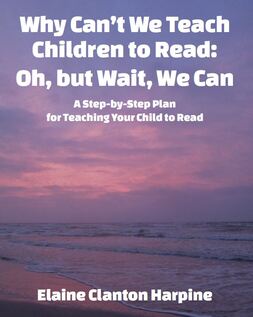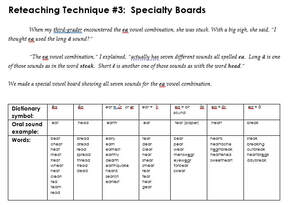 Available on Amazon, click picture for link.
Available on Amazon, click picture for link. Excellent question.
_______________________
Helpful Hint for Summer Tutoring #2. Select Your Tutoring Curriculum Carefully.
_______________________
Let’s spend a few minutes talking about how you can effectively adjust tutoring curriculum to fit the needs of struggling students. Please notice that I said “effectively.”
Yes, people adjust curriculum every single day, and we have been tutoring students for years. Unfortunately, if we do not match our teaching curriculum to the students’ needs, tutoring does not solve reading failure. We can make adjustments, but unless those adjustments are exactly what the student needs to learn, the adjustments, the curriculum, and the tutoring will fail.
Almost every single student I have worked with over the past 23 years has come to my reading clinic after the school had tried one-on-one tutoring, often systematic phonics tutoring. All of the students were struggling, most were failing in reading when they joined my reading clinic.
So, Why Are We Failing?
Notice, I did not ask, why is the student still failing. No, we are failing to help students overcome their problems and learn to read because we are not giving students a curriculum that enables them to understand how to read. We are not adjusting the curriculum to the needs of the individual student.
Let’s Look at an Example.
Chapter 8 of my new tutoring book,Why Can't We Teach Children to Read? gives an example of a third-grade student who had been taught in the classroom with balanced literacy and one-on-one tutoring in systematic phonics. Yet, she was still failing when she was sent to my reading clinic. Here's the story from the book:
**************************************
A third grader at my reading clinic was very quiet and shy. When I talked to her teacher at school, the teacher said that her problem was comprehension. When I tested her, I found that her comprehension was weak, but her main problem was that she did not know the “irregular vowel sounds” as phonics labels them. She had been taught balanced literacy in the classroom and had received one-on-one tutoring in systematic phonics. Even though she was a third grader and could read the first grade reading test and some of the beginning words for second grade, she needed to go back to the very beginning and relearn all of the vowel sounds.
I find it much more effective to reteach all of the vowel sounds, rather than guessing which vowel sound the student knows and which ones the student does not know. Teaching each vowel sound as a complete vowel cluster helps the student link directly into the oral language system.
At the end of the year, she was testing between fourth and fifth grade in reading. Her comprehension was 100%, and she was very happy. She had been afraid she would never learn to read. As she told me about midway through the year, “I didn’t want to be dumb; but no one would help me.”
**************************************
 Click image for a vowel-clustering vowel board.
Click image for a vowel-clustering vowel board. “The ea vowel combination,” I explained, “actually has seven different sounds all spelled ea. Long ā is one of those sounds as in the word steak. Short ĕ is another one of those sounds as with the word head.”
We made a special vowel board (click image) showing all seven sounds for the ea vowel combination.
Vowel clustering adjusted to the exact needs of this student. Vowel clustering teaches struggling students to both see and hear different vowel sounds. Vowel clustering is both visual and oral. Students can see and hear how words change their sound.
The vowel center organizes words by sound. The vowel center also demonstrates visually how the same letters can combine but represent different sounds.
There are no rules to memorize. Vowel clustering shows how words are spelled and how they are pronounced. Students learn to work with vowel sounds.
______________
For more about vowel clustering, read: Vowel Clustering Works Better than Phonics with at-Risk Students
______________
This is just one example of how a curriculum can be adjusted to the needs of a student.
Each chapter in Why Can't We Teach Children to Read? shows examples of how to adjust curriculum to the specific needs of students. You cannot just make “one-adjustment-fits-all” decisions. You must make adjustments for every single student, and the adjustments you make will be different for every student.
Teach to the needs of your students.
If you’d like a longer preview from the book, click here.
If you need help in tutoring, please contact me. I’m always happy to help.
 RSS Feed
RSS Feed
